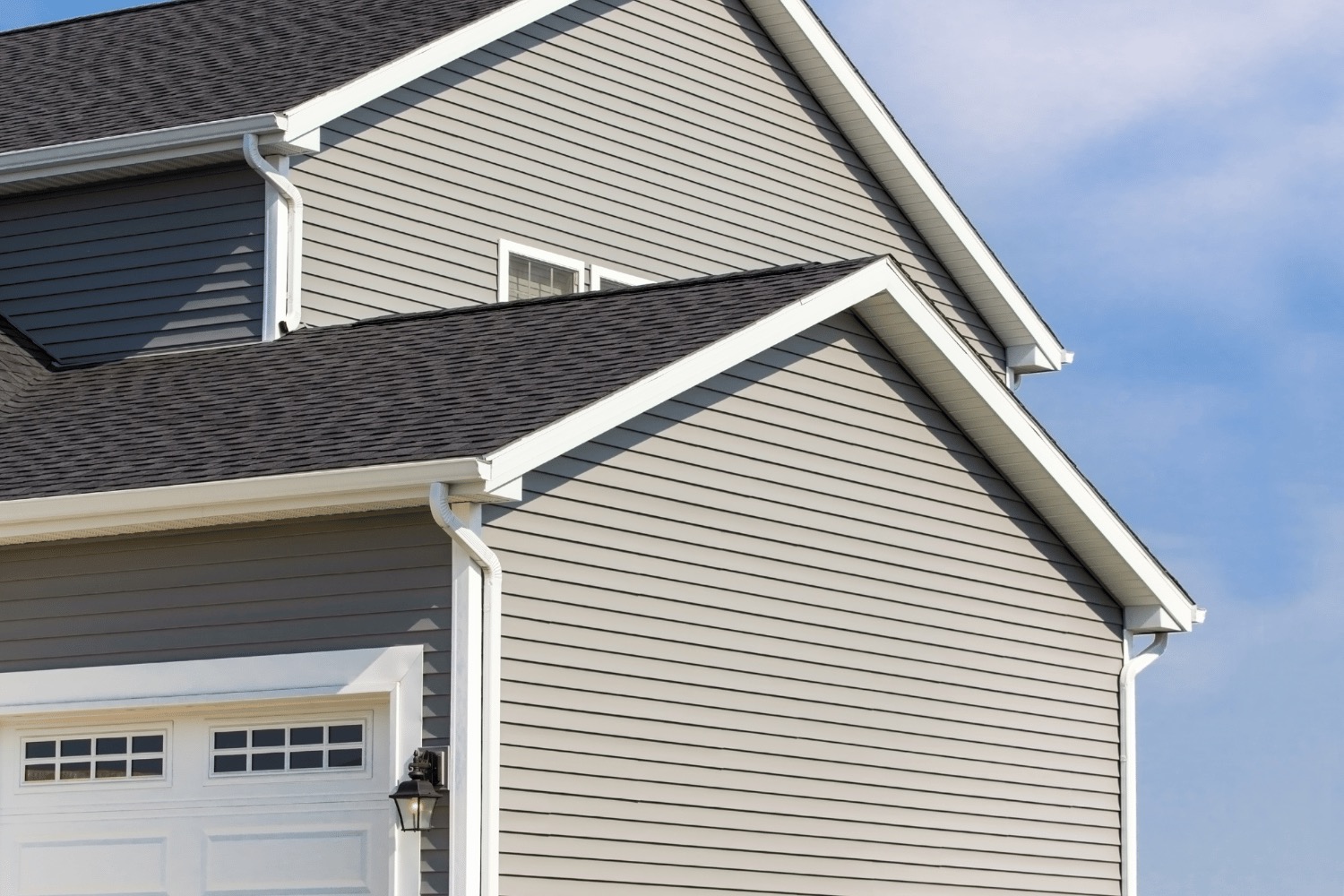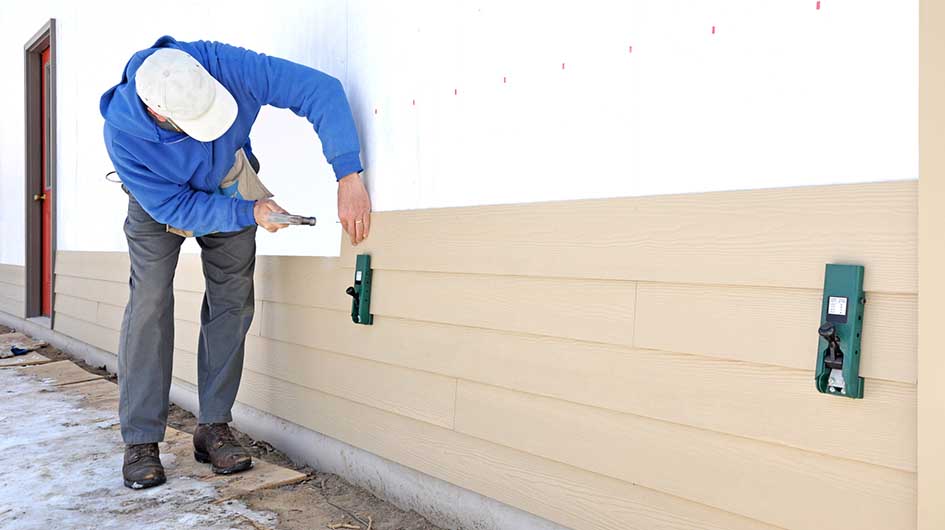Your Go-To Morris Siding Contractor for All Residential Siding Needs
Your Go-To Morris Siding Contractor for All Residential Siding Needs
Blog Article
The Vital Overview to the Various Sorts Of House Siding and Their Distinct Advantages
In the realm of home enhancement, choosing the ideal home siding is a crucial decision that impacts both aesthetic appeal and practical performance. With so numerous options to consider, which siding product absolutely stands out for your details job?
Wood Home Siding
Wood home siding, a prominent option for domestic exteriors, provides a timeless aesthetic that incorporates natural beauty with architectural integrity. This exterior siding material is available in different styles, including clapboard, roof shingles, and board-and-batten, permitting homeowners to tailor their appearance to match their style choices. Timber siding is typically crafted from sturdy types such as cedar, redwood, or pine, which are recognized for their resilience and capacity to endure ecological stressors.
Among the primary benefits of timber exterior siding is its excellent insulation homes, which can add to energy performance and lower home heating costs. Furthermore, timber exterior siding is eco-friendly, making it an eco-friendly option when sourced sustainably. Routine upkeep, including painting or discoloration, can prolong its life expectancy and boost its appearance, enabling home owners to protect the all-natural beauty of the wood.
Nevertheless, possible drawbacks include vulnerability to parasites, rot, and weather damage, demanding ample treatment and upkeep - morris siding contractor. Regardless of these issues, when appropriately looked after, wood exterior siding can supply a beautiful and resilient solution that improves the personality of a home while supplying a cozy, welcoming atmosphere

Vinyl Siding
Plastic home siding has become a leading option for homeowners looking for a low-maintenance exterior option that incorporates toughness and cost. This versatile product is crafted from polyvinyl chloride (PVC), making it resistant to numerous climate condition, including wetness and UV rays. As a result, plastic home siding does not warp, rot, or fade, ensuring resilient visual allure.
One of the primary benefits of vinyl home siding is its substantial series of styles and colors, permitting property owners to attain the desired try to find their property without the requirement for constant repainting. Additionally, vinyl home siding is very easy to install, which can considerably lower labor costs during building or restoration tasks.
Vinyl siding likewise adds to power performance. Several options feature insulation backing, which enhances thermal performance, assisting to preserve comfy interior temperature levels and possibly decreasing power costs. Its smooth surface assists in simple cleaning, requiring only periodic washing with a yard tube to get rid of dust and particles.
Fiber Cement Exterior Siding
Fiber cement siding has gained grip amongst house owners and home builders alike because of its amazing combination of resilience and aesthetic versatility. Made up of a combination of sand, cellulose, and concrete fibers, this house siding choice is engineered to withstand severe climate condition, including high winds, hefty rain, and temperature level changes, making it a lasting choice for household exteriors.

One of the key benefits of fiber concrete home siding is its resistance to insects, such as termites, and its non-combustible nature, offering boosted fire safety. morris siding contractor. In addition, it is offered in a vast selection of colors, styles, and appearances, permitting property owners to attain their wanted aesthetic without compromising efficiency
Another advantage is its reduced upkeep needs; fiber cement Resources home siding usually calls for paint or staining every 5-10 years, which is less regular than various other products. Its longevity adds to a reduced general visit the website cost of ownership, as it decreases the demand for frequent repair services or substitutes.
Ultimately, fiber cement exterior siding represents a superb investment for those looking for a durable, attractive, and functional exterior alternative, combining both type and feature to enhance the home's visual charm.
Steel Home Siding
The attraction of steel house siding hinges on its robust sturdiness and contemporary visual allure, making it a favored option for modern style. Available in materials such as aluminum and steel, steel siding supplies a series of finishes and colors, permitting homeowners to attain a personalized look that enhances their style vision.

Power performance is an additional substantial benefit, as several steel home siding items are created with insulation choices that assist control indoor temperatures. This can lead to reduced power prices with time. In addition, steel home siding is commonly recyclable, making it an eco friendly choice for sustainability-minded homeowners.
The installment procedure for metal exterior siding can be relatively uncomplicated, causing a quicker turn-around time for building and construction jobs. In general, metal house siding integrates performance and style, making it a sensible choice for those seeking a long-lasting and visually enticing exterior finish.
Block and Stone House Siding
Block and stone home siding sticks out as a timeless selection that enhances the visual appeal of any home. Understood for their toughness and low upkeep, these materials give a remarkable roi while boosting the residential or commercial property's aesthetic appeal. Readily available in different shades, structures, and patterns, block and stone can be customized to suit varied building styles, from standard to contemporary.
One of the key advantages of brick and rock siding is their energy effectiveness. Both products have natural protecting residential or commercial properties that aid regulate indoor temperature levels, possibly reducing heating & cooling expenses. In addition, they offer exceptional his response fire resistance contrasted to various other exterior siding alternatives, adding to enhanced security.
One more advantage is their durability. Brick and rock can last for decades, usually needing minimal upkeep beyond occasional cleaning. Unlike wood home siding, they are resistant to pests and rot, ensuring a lasting exterior that endures the elements.
Conclusion
In summary, the selection of house siding significantly influences a home's visual appeal, energy efficiency, and upkeep needs. Each type of exterior siding-- whether wood, plastic, fiber block, steel, or concrete and stone-- uses distinct advantages tailored to numerous property owner preferences and ecological problems.
One of the primary advantages of wood siding is its superb insulation homes, which can add to energy efficiency and reduced heating expenses. Additionally, wood house siding is naturally degradable, making it an eco friendly choice when sourced sustainably.One of the key benefits of steel siding is its resistance to numerous environmental aspects.Energy effectiveness is another considerable benefit, as several metal siding items are developed with insulation alternatives that help manage indoor temperatures. Each kind of siding-- whether wood, vinyl, fiber cement, metal, or block and stone-- uses special advantages customized to numerous home owner choices and ecological problems.
Report this page